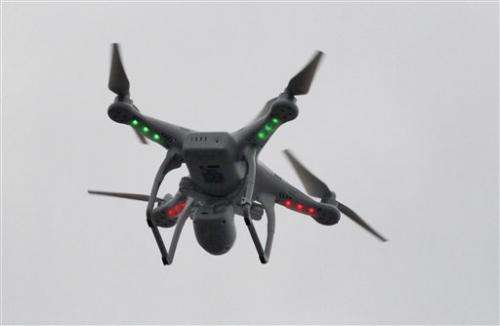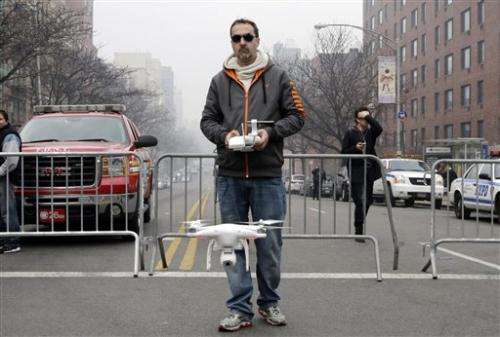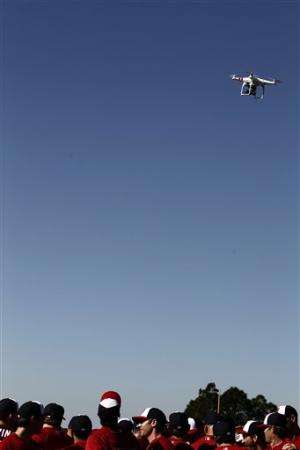Drone sightings up dramatically (Update)

The U.S. government is getting near-daily reports—and sometimes two or three a day—of drones flying near airplanes and helicopters or close to airports without permission, federal and industry officials tell The Associated Press. It's a sharp increase from just two years ago when such reports were still unusual.
Many of the reports are filed with the Federal Aviation Administration by airline pilots. But other pilots, airport officials and local authorities often file reports as well, said the officials, who agreed to discuss the matter only on the condition that they not be named because they weren't authorized to speak publicly. Michael Toscano, president of a drone industry trade group, said FAA officials also have verified the increase to him.
While many of the reports are unconfirmed, raising the possibility that pilots may have mistaken a bird or another plane in the distance for a drone, the officials said other reports appear to be credible.
The FAA tightly restricts the use of drones, which could cause a crash if one collided with a plane or was sucked into an engine. Small drones usually aren't visible on radar to air traffic controllers, particularly if they're made of plastic or other composites.
"It should not be a matter of luck that keeps an airplane and a drone apart," said Rory Kay, a training captain at a major airline and a former Air Line Pilots Association safety committee chairman. "So far we've been lucky because if these things are operating in the sky unregulated, unmonitored and uncontrolled, the possibility of a close proximity event or even a collision has to be of huge concern."

The FAA requires that all drone operators receive permission from the agency, called a certificate of authorization, before they can fly their unmanned aircraft. Most certificates limit drones to 400 feet (120 meters) in altitude and require that they remain within sight of the operator and at least 5 miles (8 kilometers) away from an airport. Exceptions are made for some government drones.
The military flies drones in great swaths of airspace in remote areas designated for military use. Customs and Border Protection flies high-altitude drones along the U.S. borders with Mexico and Canada.
Jim Williams, who heads the FAA drone office, caused a stir earlier this year when he told a drone industry conference that an airliner nearly collided with a drone over Tallahassee, Florida, in March. The pilot of the 50-seat Canadair Regional Jet reported the camouflage-painted drone was at an altitude of about 2,300 feet (700 meters), 5 miles (8 kilometers) northeast of the airport. The FAA hasn't been able to find the drone or identify its operator.
In some cases the FAA has "identified unsafe and unauthorized (drone) operations and contacted the individual operators to educate them about how they can operate safely under current regulations and laws," the agency said in a statement late Tuesday. The FAA also said rogue operators have been threatened with fines.

Aviation safety expert John Goglia, a former National Transportation Safety Board member, said he's skeptical of some of the reports because most of the small drones currently being sold can't reach the altitudes cited by pilots. Still, "it needs to be run to ground. That means a real investigation, real work done to determine just what these reports mean," he said.
More than 1 million small drones have been sold worldwide in the past few years, said Toscano, the official with the drone industry group. It is inevitable that some will misuse them because they don't understand the safety risks or simply don't care, he said.
"This technology has a phenomenal upside that people are still just trying to understand," he said. "As unfortunate as it would be that we have an incident, it's not going to shut down the industry."
Brendan Schulman, a New York attorney who represents drone operators challenging FAA restrictions, said some of the incidents come from police and other helicopter pilots who see a drone in the distance and then fly over to it to get a good look rather than remaining safely away from it.
© 2014 The Associated Press. All rights reserved.



















